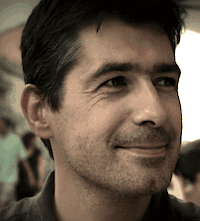When you expect an activity to evoke pain, when and why you decide to avoid or persist that activity? Until recently, this question has been mainly looked at from theories emphasizing the role of pain beliefs, with lots of research demonstrating that particularly fear of pain/movement makes people often avoid activity. Ignored in these theories, however, is that in daily life people’s behavior is often driven by multiple – and often competing – goals [1]. A simple example may illustrate this. Imagine a back pain sufferer, who usually avoids pain-evoking activities, but from time to time plays football with his kids… Although he knows that this is likely to increase pain, he persists because being a good father is an important goal for him. Patients with chronic pain are constantly confronted with this kind of motivational conflict. The question how people make sense of this, and how this influences behavior and disability, is currently informing an exciting new area of pain research.
In a recently published paper in Pain [4] we examined if the decision to avoid or persist a pain-evoking activity is actually affected by the level of motivational conflict. Healthy volunteers performed a couple of tasks, one of which sometimes resulted in pain. They were, however, completely free to perform the pain-evoking task or not. Crucially, half of the participants were told that they would be financially rewarded for performing the pain task. In other words, we created a lab analogue of a motivational conflict: avoiding pain versus earning money! Interestingly, we observed that avoidance behavior was significantly reduced when the conflicting goal of earning money was activated. In addition, we showed that the correlation between avoidance behavior and self-reported fear of the pain (which is usually high), was drastically reduced. Simply put, when a competing goal comes into play, behavior is less driven by fear. So this study is a direct illustration of the “no pain no gain” idiom!
A related study [2] showed that motivational conflict also affects how our brain processes pain. We measured attentional processing of pain, and found that performing an additional task drastically reduced the amount of attention allocated to pain signals, but only when the motivational value of that task was increased by means of a financial reward. The mechanism that is possibly underlying this intriguing effect may be “goal shielding”: our brain protects ongoing goal pursuit by suppressing distracting information such as pain [3].
In conclusion, our work shows that, in a lab situation, the decision to avoid or persist pain-evoking activity does not fully depend upon fear, but also on the goals that are related to that activity, and that once we decide to persist, our brain helps protecting these goals by suppressing attention to pain. We hope that future studies will be able to demonstrate this also in clinical populations, and that this may help refining therapeutic approaches of chronic pain, such as exposure…
About Stefaan Van Damme
 Stefaan obtained his PhD in Psychology at Ghent University, Belgium (2004). He currently holds a position as Associate Professor at the same university, in the Department of Experimental-Clinical and Health Psychology. His work focuses on the role of cognitive, affective, motivational, and behavioral factors in the experience of (chronic) pain and other somatic symptoms. Specifically, he coordinates experimental and clinical research projects on attention and hypervigilance, self-regulation, and coping.
Stefaan obtained his PhD in Psychology at Ghent University, Belgium (2004). He currently holds a position as Associate Professor at the same university, in the Department of Experimental-Clinical and Health Psychology. His work focuses on the role of cognitive, affective, motivational, and behavioral factors in the experience of (chronic) pain and other somatic symptoms. Specifically, he coordinates experimental and clinical research projects on attention and hypervigilance, self-regulation, and coping.
Follow Stefaan on Research Gate
References
[1] Crombez G, Eccleston C, Van Damme S, Vlaeyen JW, & Karoly P (2012). Fear-avoidance model of chronic pain: the next generation. Clin J Pain, 28 (6), 475-83 PMID: 22673479
[2] Schrooten MG, Van Damme S, Crombez G, Peters ML, Vogt J, & Vlaeyen JW (2012). Nonpain goal pursuit inhibits attentional bias to pain. Pain, 153 (6), 1180-6 PMID: 22409943
[3] Van Damme S, Legrain V, Vogt J, & Crombez G (2010). Keeping pain in mind: a motivational account of attention to pain. Neurosci Biobehav Rev, 34 (2), 204-13 PMID: 19896002
[4] Van Damme S, Van Ryckeghem DM, Wyffels F, Van Hulle L, & Crombez G (2012). No pain no gain? Pursuing a competing goal inhibits avoidance behavior. Pain, 153 (4), 800-4 PMID: 22301333



